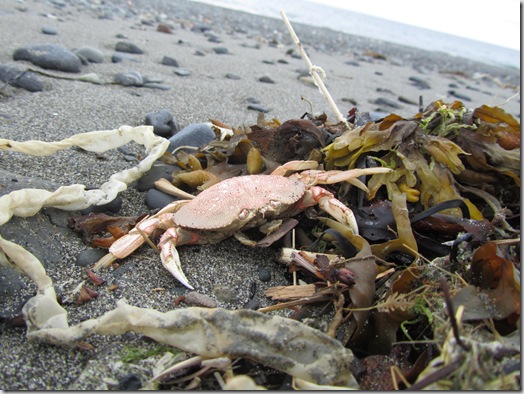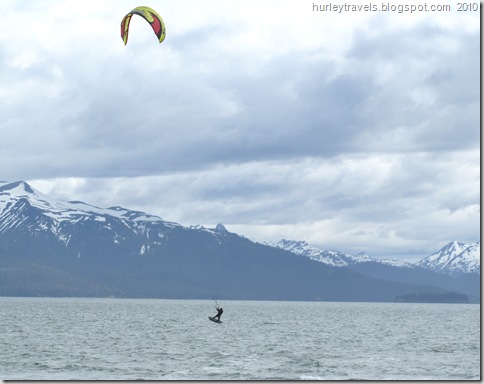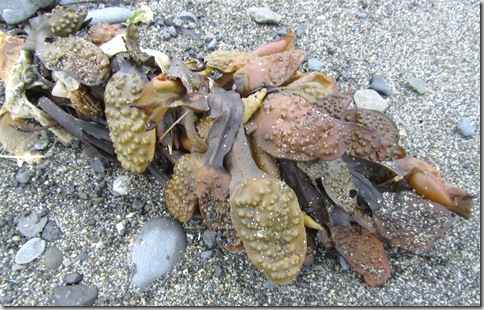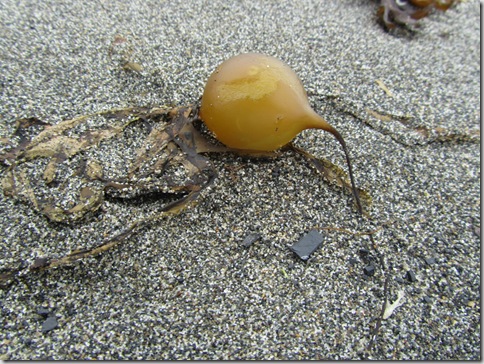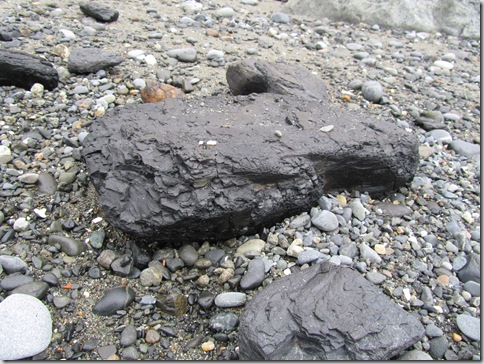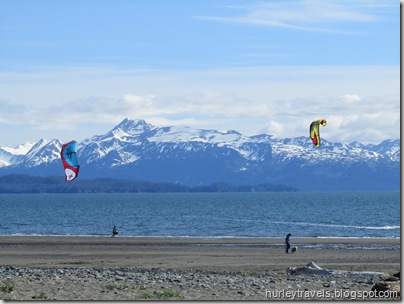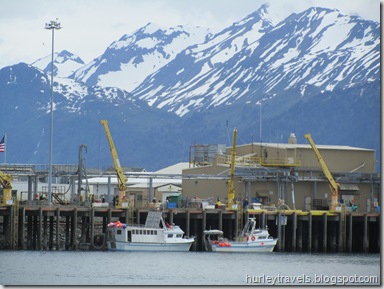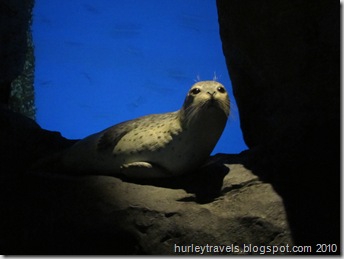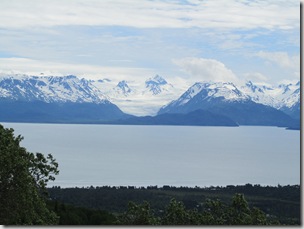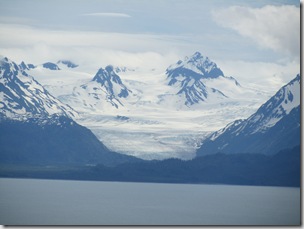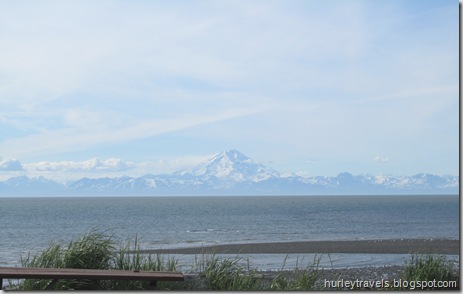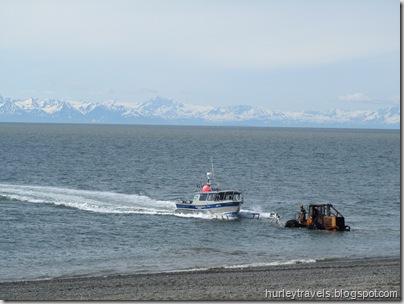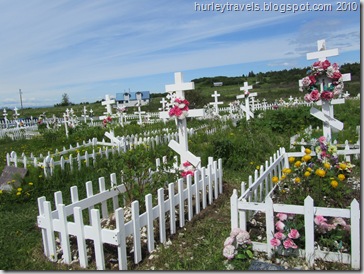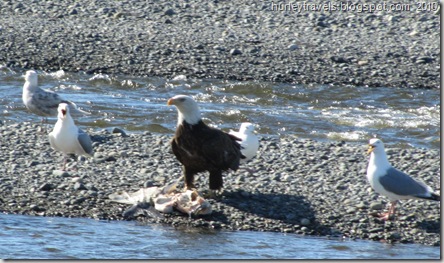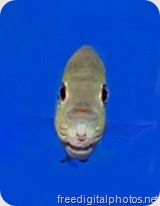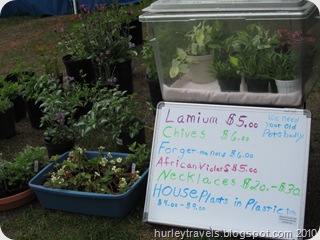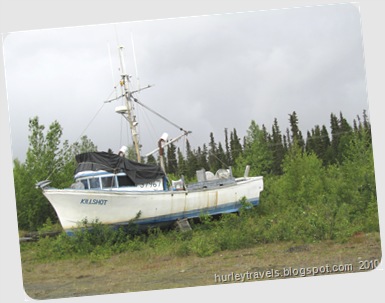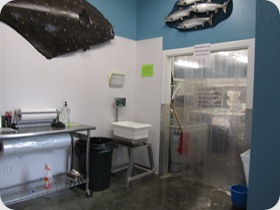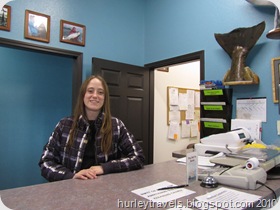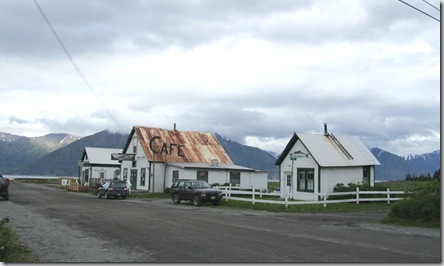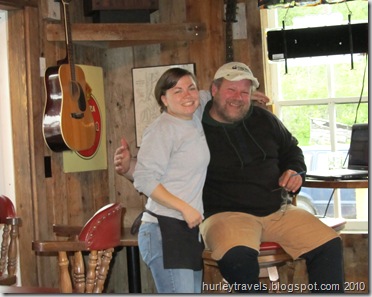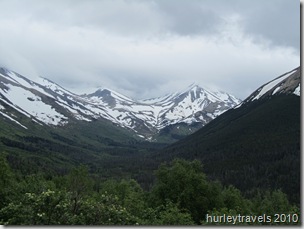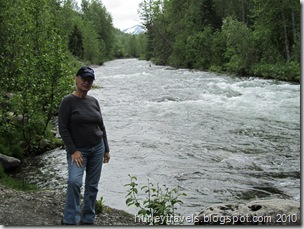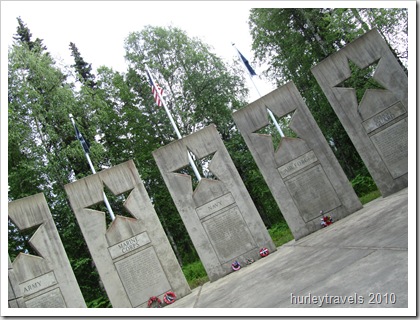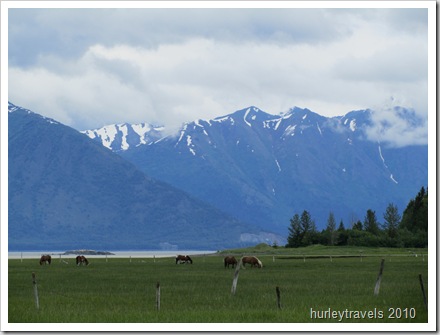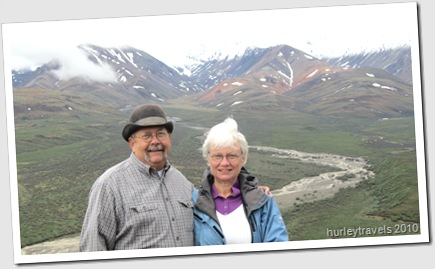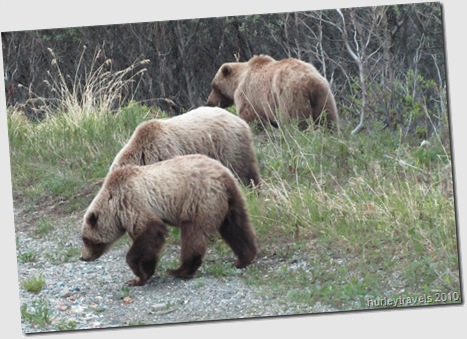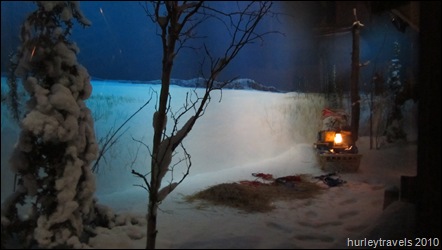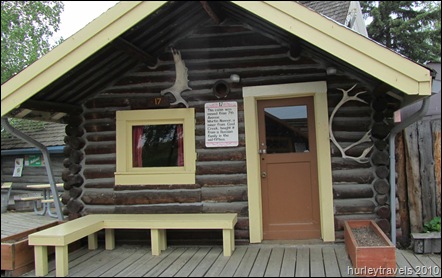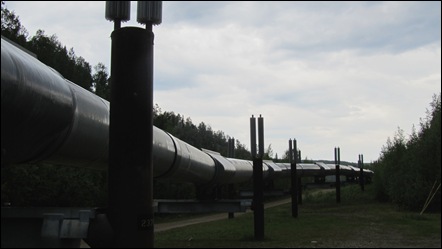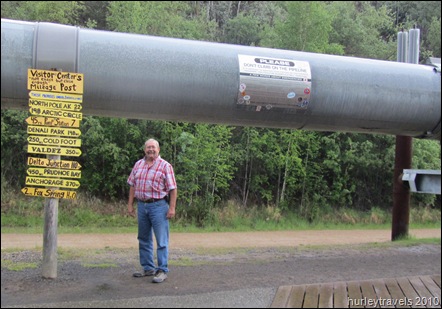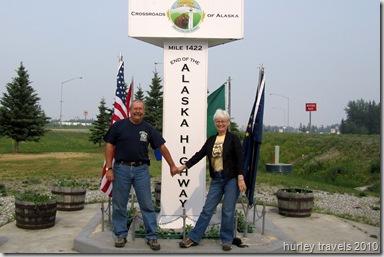June 4 – 6: From our first day in Denali National Park we had generous doses of the specialness of this awesome piece of Alaska. We parked at Riley Campground, just inside the entrance, to have an opportunity to get acquainted with the various offerings at the beginning of the park. The campground is roomy enough for our 36’ motorhome in several spots. And with our Golden Age Pass, the cost is $14.00 per day, with a dump and water available. We considered this a bargain considering the convenience and the surroundings.
There’s plenty to keep anyone occupied for a few days in the vicinity of this campground, what the park locals call the “front country.” There’s the Visitors Center, the Murie Science Center, the Wilderness Access Center, hiking trails, movies, exhibits, hands-on displays and ranger programs.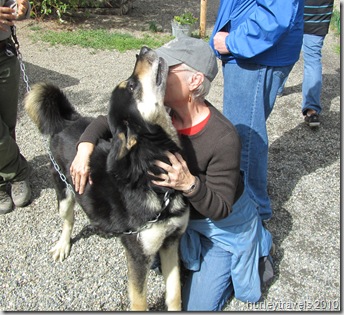 Oh, and there are free shuttles to the dog sled facility and 17 miles into the Park Road to Savage River. We sampled it all. The dog sled demo was especially fun. This friendly and very informative activity includes an ample amount of time for everyone to communicate with the animals as well as the trainers. The dogs are very loving. They are the working type, that are used for reaching remote areas of the park in the winter. We learned here that the “working” dogs are larger than those bred and developed for racing. The rangers who work with the dogs are there to provide answers to any and all questions and to give background on the dogs specifically. Then they harness the dogs so the group can see them in action. We thoroughly enjoyed ourselves and would go back.
Oh, and there are free shuttles to the dog sled facility and 17 miles into the Park Road to Savage River. We sampled it all. The dog sled demo was especially fun. This friendly and very informative activity includes an ample amount of time for everyone to communicate with the animals as well as the trainers. The dogs are very loving. They are the working type, that are used for reaching remote areas of the park in the winter. We learned here that the “working” dogs are larger than those bred and developed for racing. The rangers who work with the dogs are there to provide answers to any and all questions and to give background on the dogs specifically. Then they harness the dogs so the group can see them in action. We thoroughly enjoyed ourselves and would go back.

Actually, after our three-day introduction to Denali, we concluded that with the availability of portion of the Park Road that is open to public vehicles and all of other programs offered, anyone could enjoy the park without purchasing the expensive shuttle bus or tour bus passes that take you beyond that point.
But regardless, there is a great deal more and we wanted the full portion. On our second day, we took the shuttle bus tour to Toklat River, mile 53 of the Park Road, a 6 1/2-hour roundtrip. The ride took us 33 miles beyond the restriction for public vehicles. This pass costs $24. There are more formal tours offering food and a guide that cost more. Again, these are choices that we made.
This trip was our first chance to see Mount McKinley (known by Denali, or “The Great One” or “the mountain” to Alaskans). But, mind you, we already knew that not many actually ever see the mountain. Some say 20% and some 30%. There is a 30% club for those that are fortunate to be there when “the great one” comes out. There is so much beauty in Denali National Park that you will be awed even if you aren’t blessed with a clear day over “the high one.” That morning it was raining so we boarded our bus ready to ride past the first 9-mile viewing area without a glimpse. Not knowing if we’d have a driver who would offer any narration or how the bus ride would go, we were anxious to get on and get going. We chose a left-side seat near the front, thinking that we’d have better views and could hear if our driver offered words of wisdom. Marilyn, our driver, turned out to be just right. She gave us interesting information on nature and history on our trip, but was quiet too.
We also lucked out as a short time into our trip the clouds filtered out and ole sol peaked out. Then the question came to Marilyn: “Will we see the mountain today?” Of course, she answered, “I don’t know.” As we approached the 9-mile viewing area, those in the know were pointing or talking to their mates about where “it” should be. 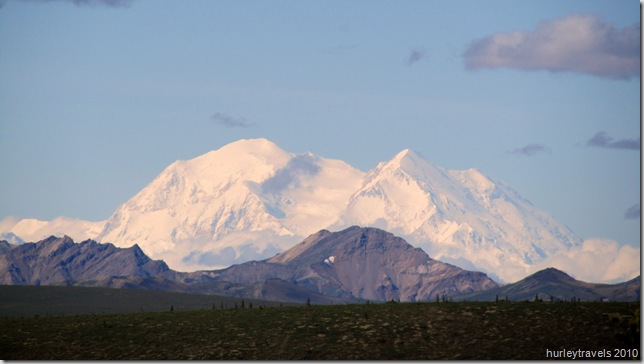 And then we came around a corner. The “great one” was out in all its glory. Mt. McKinley is 20,320 feet high, the highest mountain in North America. Of course, the mountain is completely covered in snow. It was shining bright - almost a little unreal.
And then we came around a corner. The “great one” was out in all its glory. Mt. McKinley is 20,320 feet high, the highest mountain in North America. Of course, the mountain is completely covered in snow. It was shining bright - almost a little unreal. 
There are scheduled and unscheduled stops on these bus trips, depending on the mountain and wildlife. We had three opportunities to get photos of Mt. McKinley. The first one above is early in the day at nine miles on the Park Road. The second is later in the afternoon, much further west into the park. Much different aspects. We felt lucky that on our first ever journey into the park we saw Denali.
The trip to Toklat River was filled with the splendid scenes that just kept coming as we traveled the 53 miles. Every mile is beautiful. And, of course, an important job for all travelers on the bus is to watch out for wildlife. We saw fuzzy-antlered caribou and the smaller inhabitants, such as snowshoe hares and numerous waterfowl. There was the swiftly-roaming pair of coyotes searching for a meal. But there were no bears coming out for us today. Even so, we were happy with our beautiful day in Denali.
But wait, as we came back to our campsite for the night, we had a visit from this lady and her calf. 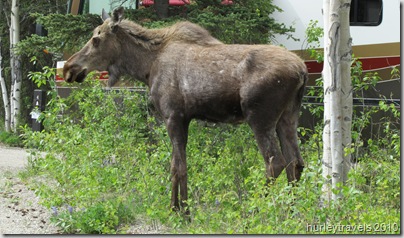 It turns out she brings her baby to the campground every night lately. She must feel it is safe from the grizzlies and wolves there. The majority of the moose calves are taken as prey each year. It’s a part of nature’s plan. But, for this ugly lady and her young one, the humans at Riley Campground were the best bet. The last we saw them that evening they were both lying in the center of the campground, just relaxing.
It turns out she brings her baby to the campground every night lately. She must feel it is safe from the grizzlies and wolves there. The majority of the moose calves are taken as prey each year. It’s a part of nature’s plan. But, for this ugly lady and her young one, the humans at Riley Campground were the best bet. The last we saw them that evening they were both lying in the center of the campground, just relaxing.
A good start to our Denali visit – to be continued.
